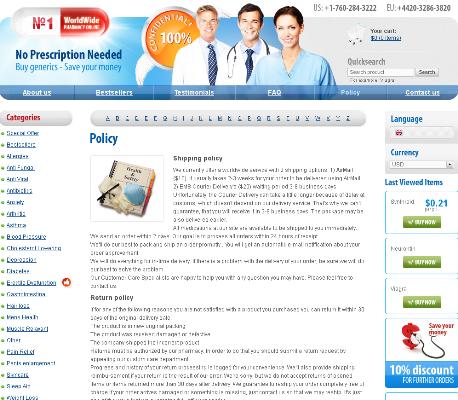Understanding What Biaxin Is and How It Works
Biaxin, also known by its generic name clarithromycin, is an antibiotic used to treat various bacterial infections, including respiratory infections, skin infections, and certain types of stomach ulcers. It belongs to a class of medications called macrolides, which work by inhibiting the bacteria's ability to produce proteins essential for their growth and proliferation. As a result, Biaxin helps to effectively halt the spread of the infection while allowing the body's immune system to eradicate the bacteria.
Here's a brief table of conditions Biaxin treats and typical outcomes:
| Condition | Outcome | |----------------------------|--------------------------------------------| | Respiratory Infections | Reduction in symptoms within 48-72 hours | | Skin Infections | Decreased inflammation and healing | | Stomach Ulcers (H.pylori) | Eradication of infection, ulcer healing |
Understanding how Biaxin works can help patients appreciate why it is crucial to take the medication as prescribed and complete the full course, even if they start to feel better before it is finished. This ensures the infection is fully eradicated and helps prevent antibiotic resistance.
Recommended Dosages: Adults, Children, and Special Cases

When it comes to taking Biaxin, the dosage can vary significantly based on age and specific health conditions. For adults, the typical dose ranges from 250 mg to 500 mg taken twice a day, spanning a 7 to 14 day period depending on the type and severity of the infection. Children, however, require a carefully adjusted dose, commonly determined by their weight. Pediatric doses usually fall between 7.5 mg/kg to 15 mg/kg, administered twice daily. For individuals with unique circumstances such as kidney or liver issues, dosages might need further adjustments to prevent any potential complications.
In some special cases, the standard dosages may not apply, necessitating a more personalized approach. For example, in cases of severe infections or for those who are immunocompromised, a higher dose of Biaxin might be needed for optimal effectiveness. Conversely, individuals with renal impairment are often advised to have their doses reduced to avoid potential toxicity. Always consult your healthcare provider to determine the precise dosage tailored to your specific needs. This ensures maximum effectiveness while minimizing any risks associated with improper dosing.
Best Times to Take Biaxin for Maximum Effectiveness
Taking Biaxin at the right times can significantly enhance its effectiveness in treating your condition. Typically, Biaxin should be taken every 12 hours, with or without food. However, it's essential to choose times when you can consistently take the medication, whether that's morning and evening, or another consistent schedule that works best for you.
Consistency is key; missing doses can reduce the efficacy of Biaxin and potentially lead to antibiotic resistance. Setting reminders or alarms can help you stay on track. Also, ensure that you manage your meals around your medication schedule to avoid stomach upset, a common side effect that can be mitigated by food.
Important Safety Precautions and Potential Side Effects

When taking Biaxin, adhering to safety precautions is crucial to ensure the medication's effectiveness and mitigate potential risks. It’s essential to inform your healthcare provider about any existing medical conditions, such as liver or kidney issues, as these can affect how your body processes the drug. Pregnant or breastfeeding women should also consult their doctors before starting Biaxin to avoid any harmful effects on the baby.
Potential side effects of Biaxin range from mild to severe and can include gastrointestinal issues like nausea and diarrhea, as well as more serious reactions such as allergic responses or abnormal heart rhythms. If you experience symptoms like rash, itching, or difficulty breathing, seek medical attention immediately. Monitoring your body's reactions can prevent these adverse side effects from becoming critical.
Lastly, it's imperative to follow the prescribed dosage strictly and complete the entire course of antibiotics, even if you start feeling better before it's finished. Abruptly discontinuing Biaxin can lead to bacterial resistance, making future infections harder to treat. Regular follow-ups with your healthcare provider can help manage any side effects and ensure that the treatment is proceeding as expected.
Common Drug Interactions to Avoid When Taking Biaxin
Biaxin, known for its effectiveness in treating various bacterial infections, has certain drug interactions that must be taken seriously to avoid adverse effects. Co-administration with medications such as statins (used for lowering cholesterol) or warfarin (a blood thinner) can increase the risk of significant side effects. Statins might lead to muscle issues, while warfarin can result in unusual bleeding.
To help you navigate these complexities, here’s an easy reference:
| Medication | Possible Interaction |
|---|---|
| Statins | Increased risk of muscle damage |
| Warfarin | Risk of unusual bleeding |
| Benzodiazepines | Enhanced sedative effects |
In addition, benzodiazepines, used for anxiety, can have enhanced sedative effects, making it crucial to discuss your complete medication list with your healthcare provider before starting Biaxin. By doing so, you ensure that Biaxin works effectively and safely in your treatment plan.
Tips for Sticking to Your Biaxin Treatment Plan
Finding ways to stick to your Biaxin treatment plan can make a significant difference in how effectively the medication works. One practical tip is to integrate your doses into your daily routine, such as taking your pill with a regular meal or setting an alarm on your phone as a reminder. Keeping a medication journal can also be helpful for tracking doses and noting any side effects that occur.
In addition to routine, staying informed about your treatment can enhance compliance. Understanding the importance of completing your entire prescription, even if you start to feel better, is crucial in preventing the return of the infection and reducing the likelihood of antibiotic resistance. Engaging with your healthcare provider by asking questions about your treatment can provide clarity and motivation to adhere to the prescribed regimen.

